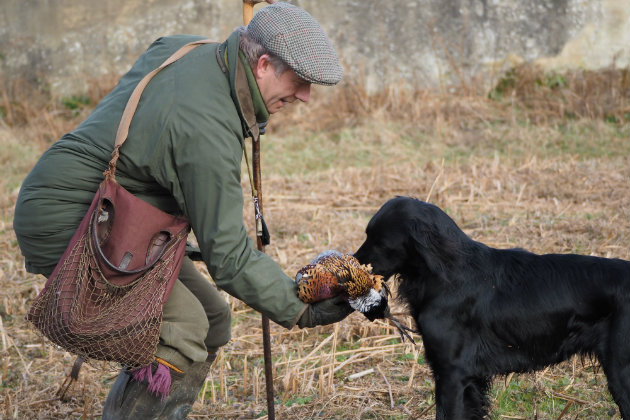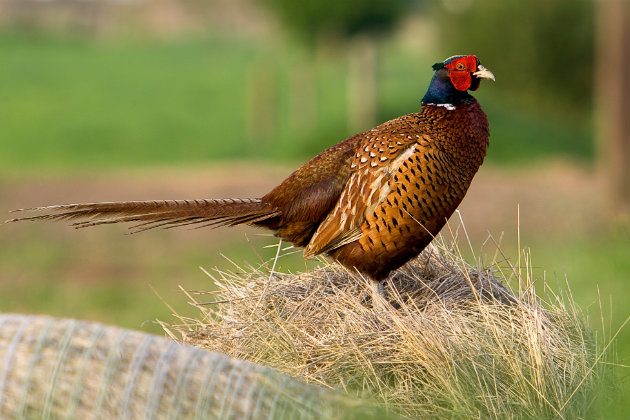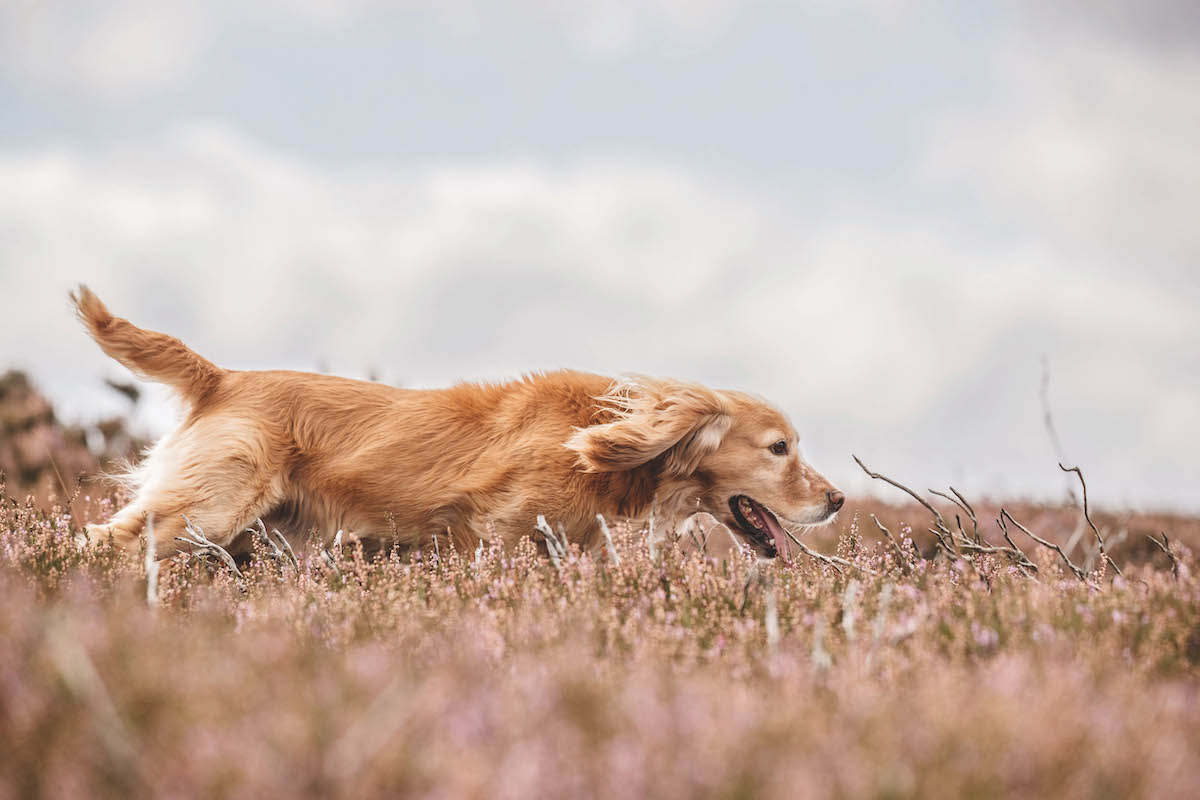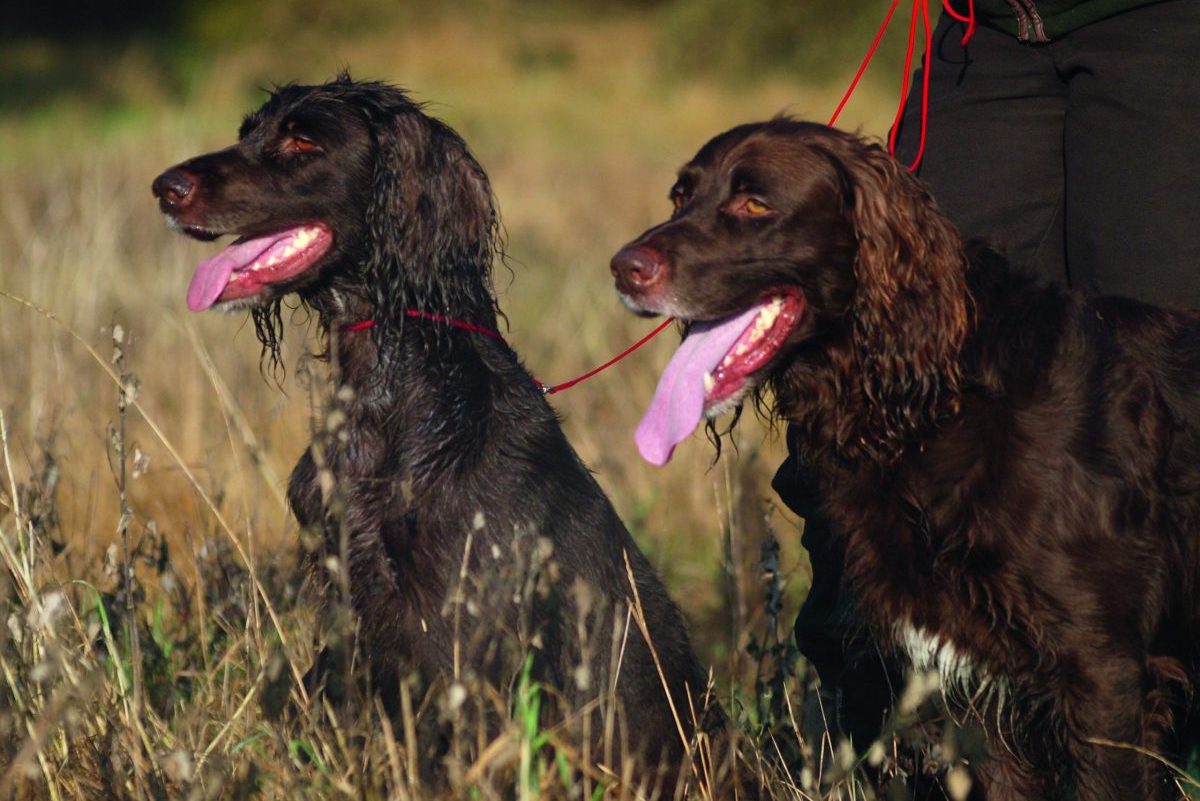Picking-up on a shoot: this is what you need to know
Of all the elements that make up a driven game shoot, perhaps the one that is least understood, is the role of the picker-up

Picking-up on a shoot is a specialised job that demands a lot when done properly.
It requires:
- Self-motivation
- Teamwork
- Initiative
- Concentration
- Observation
- Ability to prioritise
It’s crucial that a picker-up knows the ground being shot. This includes the layout of the drives and their relation to each other, the position of the gun line, the direction the majority of the birds fly, the odd corners where the crafty ones leak out and the spots the wounded birds make for year-on-year. (Read our guide to the best clothing for beaters and pickers-up.)
Dogs and picking-up on a shoot
The most important tool in a picker-up’s box is his dog. The dog should be quiet while the drive is in progress, obedient and responsive to whistle and hand signal. Dogs must not fight or be aggressive to other dogs and they must retrieve smartly and deliver neatly. A good picking-up dog needs little direction from his handler, as it will have learned to think for itself. They must be able to deal with all the game they are likely to encounter on any particular shoot, whether pheasant, partridge, grouse, woodcock or duck.

Other equipment a picker up needs?
- A priest for despatching wounded birds
- A mobile phone for keeping in touch with other pickers-up
- A means of carrying collected game

All shoots need a picking-up team
How to join a picking-up team
Enquiries among keepers, beaters, Guns and established pickers-up will reveal where vacancies exist. Getting a good reputation on a small shoot may lead to work on others. Weekday picking-up teams often consist largely of the retired and it’s a good way of keeping fit and having fun. You need the determination to find every last bird. (Read our advice on how to stay safe as a picker-up.)
Where to stand on a drive
This varies from drive to drive, shoot to shoot and keeper to keeper. However, it’s a good idea to stand as far back as possible, with a view of the gun line which is your responsibility, if possible.
While the drive is in progress watch the birds as they go over the gun line if you can, and look to see where downed birds fall. Look especially for wounded birds and those that don’t look ‘right’ in the air. Partridges can fly on some distance before suddenly falling dead, sometimes as much as half a mile from the gun line. Pheasants too have been known to fly on some way before falling dead. If these are not seen they are lost. In many cases the further back on the gun line you are the more you will see.

A “priest” is a traditional tool used to despatch pricked birds
Etiquette during the drive
Don’t pick-up during the drive if it can be avoided. Dead birds around the gun pegs are just that – dead. They should be collected by the Guns and their dogs. Pickers-up should hold back if Guns are working dogs and this may delay the overall picking-up operation.
If a bird hits the ground and gets up, watch it carefully. It may just stagger a few feet and then quietly expire in which case it is no problem, but it might run. Wounded birds mostly run in the direction they were flying and if that happens to be towards you then let it keep on coming. Watch to see if your dog has seen it and if he has make sure he is absolutely locked onto it. Let the bird come in as close as you can before letting the dog go. That way the bird can be picked with little fuss and without interfering with the drive.

When picking-up it is always best to stand well behind the Guns
When the drive is over
The general principle is to work forwards to the gun line. If you are standing far enough back this will give those Guns who have a dog with them time to get a retrieve or two before they have to move off to the next drive.
What sort of ground are the Guns on? Is it open drill, plough or cover crop a foot or more in height? Are they in woodland or on open grass? These factors will determine a picker-up’s course of action on any given drive.
If the Guns are on open ground I first go in search of the wounded birds that may have gone down a hedgerow or a small copse they always make for. Once that is done a look along the gun line to make sure nothing has been missed is all that would be required.
However if the Guns are standing in a cover crop or a field of rape for example, then do this is reverse. Wounded birds can cover a surprising amount of ground if they are in cover crops. Work as a team if possible with two or three pickers-up systematically sweeping the area rather than wandering randomly about. When you are sure you have covered the area thoroughly, turn your attention to wounded birds which have flown on to a hedgerow or other parts of the shoot they tend to make for.

Pheasants are creatures of habit
Wounded birds do not like to cross open ground. So, while they may run through a wood, when they get to the far edge of it they will stop and take cover. Similarly with rides and tracks.
Pheasants, in particular, seem to fly to the same areas year on year. They are often flown towards “home”, i.e. a release pen. Always check before entering a pen as some keepers do not want pickers-up in them.

Simple things such as picking up used cartridges make a big difference
Mutual respect
It is important that, whatever the type of shoot, each different part of the team, including the Guns, understands the etiquette and respects each other. One of the problems which picking-up teams have is that different teams of Guns care differently about the various issues.
It is sad when you hear a picker-up talking of the Guns not caring or showing an interest in whether the birds they have shot have been picked.
If a Gun does not have a dog they still have an obligation to make sure any birds around the peg are neatly gathered, to check in with the picker-up behind them that everything is in order and help to point out any injured birds.
If no picker-up is around because they are working elsewhere, it’s very easy to have a quick word with the shoot host or keeper and inform them you have left some birds by your peg awaiting the game cart, or that there is a wounded bird down by the stream. They have radios and can relay messages.
Guns leaving empty cartridge cases behind, game randomly lying around the field and just walking off on the phone do nothing to endear the Guns to the pickers-up.
Picking-up on a shoot is key and the team are an integral part of the day; their job is vital to the well-being of our sport ensuring that nothing goes to waste. Poor picking-up can affect the Gun’s experience and remember that on a commercial shoot it’s the Guns who have paid for the day.

Dorothy Wall-Duffin and her picking-up team of distinctive Labradors out in the field
More about picking-up on a shoot
- Picking up on a shoot is a privilege and you will see some beautiful parts of the country.
- Expect little pay, anti-social hours BUT a good day’s sport in the company of kindred spirits.
- Learn the layout of the land you are expected to cover. Commit the names of each drive to memory.
- Be a team player. Sometimes you will find yourself in the bleakest spot, far from the action and questioning if you are even in the right place. Accept with good grace that everyone on the team will experience that wilderness emotion now and then, and today it was your turn.
- Be prepared to walk a long way back for a bird. It may be just the one but it is a great ego boost to retrieve that difficult mark or elusive runner.
- Take an interest in the other dogs and applaud a good retrieve, enquire about the dog’s breeding and comment on its fine looks.
- Once it hits the deck a bird becomes food and must be treated accordingly. Pheasants, partridges and ducks are best carried on a game carrier or braced up rather than in a bag where they’re more likely to suffer damage. The game cart staff are a key part of the picking-up team.








